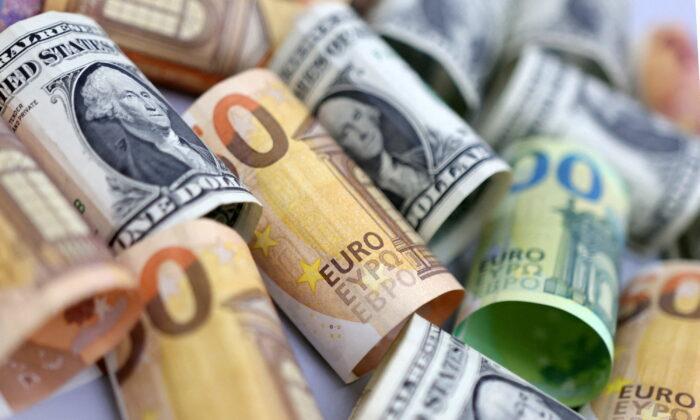LONDON—The euro hit a fresh two-decade low on Tuesday, dealt a fresh blow by renewed concern that an energy shock will keep inflation elevated and makes a recession in Europe all but certain.
China’s yuan weakened to a two-year low, while sterling briefly touched its weakest since March 2020.
Business activity data from Europe was not as bad as feared, pushing the euro off the 20-year low hit early in the session, at $0.99005.
But by 0820 GMT, the currency was still down 0.15 percent at $0.9930 and holding below the key $1-level.
“What we’re trying to figure out is how much of the move in the euro is driven by thin summer liquidity and how much is driven by flows,” said Kenneth Broux, a currency strategist at Societe Generale in London.
“But of course the increase in gas prices yesterday is bad news all around.”
British and Dutch wholesale gas prices rose sharply on Monday as the prospect of maintenance on the main Russian pipeline to Europe put markets on edge.
Russia will halt natural gas supplies to Europe via the Nord Stream 1 pipeline for three days at the end of the month, the latest reminder of the precarious state of the continent’s energy supply.
Heat waves on the continent have already put a strain on energy supply and worries are growing that any disruption during the winter months could be devastating for business activity.
“Given the current mood, there’s obviously concerns as to whether that’s going to be three days or whether it’s going to be three years,” said Ray Attrill, head of FX strategy at National Australia Bank (NAB).
The pound was dragged to a new 2–1/2-year low of $1.1718, while the Japanese yen edged up to 137.24 per dollar after touching a one-month low of 137.705 earlier in the day.
The risk-sensitive Aussie fell to a one-month low before recovering to around $0.6888.
Elsewhere in Asia, China’s yuan fell to an almost two-year low of 6.8666 per dollar.
Against a basket of currencies, in which the euro is the most heavily weighted, the U.S. dollar index pulled back from session highs and was last trading at around 108.93.
Another reason investors have sought shelter in dollars is the growing risk of a hawkish message from the Federal Reserve’s Jackson Hole symposium, flagged by several officials last week.
“I think he (Fed chief Jerome Powell) will be hawkish on Friday, it’s too soon to declare an inflation victory,” said Broux at Societe Generale.





